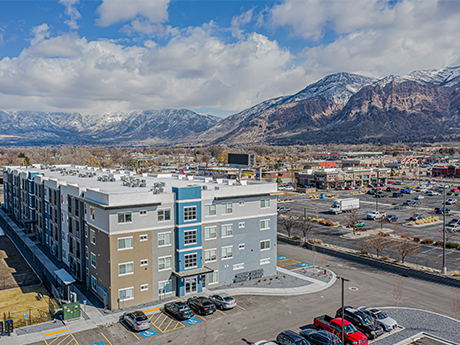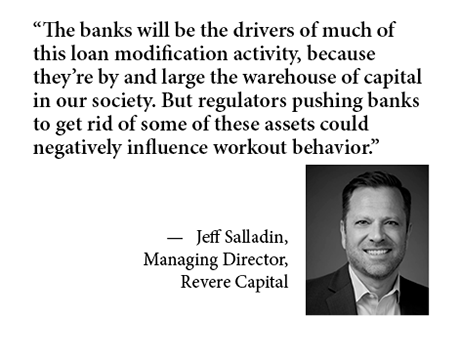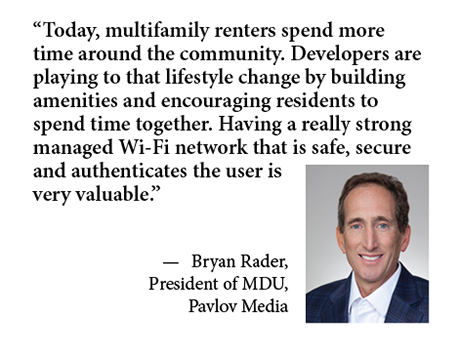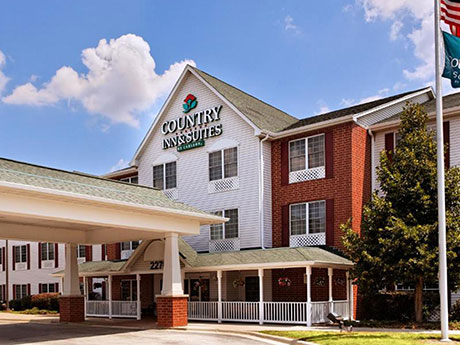— By Brett Silverstein — With uncertainty looming large and terms like risk, crash and recession swirling around the industry, it comes as no surprise that some investors are clinging to their cash reserves. But savvy investors go back to the fundamentals of the real estate cycle. While the economic conditions that influence the cycle are often different, such as the Dot-Com bubble, the Global Financial Crisis and, most recently, COVID, the predictability of the real estate cycle is consistent. In my opinion, a sound acquisitions strategy today is one grounded in acquiring high-quality assets below replacement cost in Intermountain West markets that exhibit strong fundamentals, such as outsized rent growth, continued strong household formation patterns and limited future supply growth. Distress leads to discounts Amidst the prevailing market turbulence, the acquisition of existing assets at a discount to the cost of building new ones becomes an even more compelling proposition. Replacement cost alone may not suffice as an investment metric, but the combination of discounted prices and robust market fundamentals creates the secret sauce of sound investment decisions. Housing is an essential good that is always in demand and has historically inflated over time. The foundational concept of “heads …
Features
Converting Office to Life Sciences Offers Lucrative Alternative to Residential Reuse Projects
by Jeff Shaw
— By Julian Freeman, Dave Wensley and Gabe Pitassi — With steep vacancy rates impacting traditional office markets due to the headwinds of higher interest rates, short-term economic uncertainty and long-term remote/hybrid work uncertainties, underutilized traditional office buildings may become liabilities before the end of their anticipated economic life. Owners of these properties may consider a conversion — an adaptive reuse or repurposing — to access higher rents and occupancy rates. In view of nationwide housing shortages, especially in California, converting office to multifamily has received much attention as a logical move. However, such a conversion is not always viable from a financial, structural, legal or location perspective. An alternative option may be to repurpose an office building for life sciences use. Such a conversion, while posing its own unique challenges, may provide more realistic options than a conversion to residential use for many owners and properties. Challenges in converting to residential Converting an office building to residential use presents challenges on multiple fronts. Zoning laws vary based on property location and usage, and the property may need to be rezoned to a different classification to allow multifamily uses. Rezoning requires local government approval and public hearings, which can take months …
Following the financial markets crash 15 years ago, banks and other lenders began working with commercial real estate (CRE) borrowers who had run into trouble. Solutions included loan extensions, loan sales, recapitalizations and foreclosures. Today lenders are pulling out the playbook again. “We have seen a huge number of loan workout deals come across our desk,” says Jeff Salladin, a managing director with Dallas-based private debt fund Revere Capital. “Any lender that holds loans on their books is seeing the same thing.” Back in 2008, dodgy and highly leveraged residential and CRE loans — along with the emergence of exceedingly risky debt derivatives created by Wall Street — eventually crashed, causing the credit market to collapse. Today credit is still available, but the cost of it has spiked over the last 18 months. Consequently, many commercial properties owners have seen values plummet, making it difficult to find refinancing. The Federal Deposit Insurance Corp.’s (FDIC) imminent auction of Signature Bank’s $33 billion in commercial property loans and other assets is expected to attract bids as much as 40 percent below face value, according to The Wall Street Journal. That’s just the latest gloomy bellwether regarding CRE values and underscores the predicament …
FeaturesHeartland Feature ArchiveMultifamily & Affordable Housing Feature ArchiveNortheast Feature ArchiveSoutheast Feature ArchiveTexas & Oklahoma Feature ArchiveWestern Feature Archive
Forecast Survey: What’s Your Take on Commercial Real Estate in 2024?
by John Nelson
The editors of REBusinessOnline.com are conducting a brief online survey to gauge market conditions in 2024, and we welcome your participation. The survey should only take a few minutes to complete. Questions range from property sectors that you are most bullish on heading into 2024 to trends in deal volume to your outlook for interest rates. The results of our 13th annual survey will be compiled and published in the January issues of our regional magazines. Conducting these surveys is part of our mission at France Media to provide readers with indispensable information, and we couldn’t do it without your help. To participate in our broker/agent survey, click here. To participate in our developer/owner/manager survey, click here. To participate in our lender/financial intermediary survey, click here. (Note: Please remember to click on “done” to properly submit the survey.)
Investment sales volumes of commercial properties have been on a slow-but-steady decline since the Federal Reserve began increasing interest rates 18 months ago, but that doesn’t mean that investors aren’t eager to deploy capital in the face of falling prices and valuations. As interest rates have steadily risen, so too have capitalization rates, and commercial buyers that rely heavily on debt to fund purchases have been forced to scale back on new acquisitions. With fewer offers, sellers have seen their prices drop off from two years ago, when assets in classes like multifamily and industrial experienced record levels of rent growth, price appreciation and cap-rate compression. Yet it remains unclear just how close to the bottom the market actually is, or whether the nadir of pricing and deal volume has already been reached. What is clear is that in downtimes such as these, investors of all types are looking for opportunities to “buy the dip.” Particularly for choice assets, enduring some interest-rate-induced pain in the short run is a fair trade-off for gaining a long-term foothold in high-growth markets — and at a premium price, no less. The disconnect between demand and deployment was detailed in the Emerging Trends in …
Content PartnerDevelopmentFeaturesLeasing ActivityMidwestMultifamilyNortheastPavlov MediaSoutheastTexasWestern
Multifamily Operators Adopt Property-Wide Internet Access as New Standard Amenity
Multifamily residents want to take their internet connections with them beyond their unit’s four walls and throughout the complex. The National Multifamily Housing Council has found for years that 90 percent of renters say good internet access is a necessity. But the meaning of good connectivity has changed. “Ten, fifteen or twenty years ago, the most popular trend was cocooning — where people would go to work, come home and run into their apartment. They’d close the door, and you wouldn’t hear or see from them again until the next day,” says Bryan Rader, president of MDU at internet service provider Pavlov Media. “Today, multifamily renters spend more time around the community,” he continues. “Developers are playing to that lifestyle change by building amenities and encouraging residents to spend time together. Having a really strong managed Wi-Fi network that is safe, secure and authenticates the user is very valuable.” Put more simply, Wi-Fi within amenities is important to renters. Take fitness centers, for example. When was the last time you saw anyone on a treadmill without headphones relaying music from the internet through a phone or tablet? The move toward property-wide internet demand started in universities as students needed internet …
AcquisitionsContent PartnerDevelopmentFeaturesIndustrialLeasing ActivityLee & AssociatesMidwestMultifamilyNortheastOfficeRetail
Lee & Associates: Slowing Absorption, Rent Growth Put Brakes on New Development for Most Real Estate Types, Though Retail Sector Shines
Slower absorption and rent growth plagued industrial, office and multifamily asset classes across the United States in the third quarter, as outlined in Lee & Associates’ 2023 Q3 North America Market Report. Some regional exceptions were able to buck the overdevelopment trend, but retail was the only property type to avoid the quarter’s shift toward rising vacancy rates. High interest rates, slower rent growth and fear of overbuilding have contributed to lower construction starts in every sector. The full Lee & Associates report is available — including breakdowns of factors like detailed vacancy rates, inventory square footage, cap rates outlined city by city, market rents and more — here. The analysis below provides an overview of industrial, office, retail and multifamily real estate sectors alongside sector trends, economic background as well as geographic exceptions within each property type. Industrial Overview: Absorption Continues Slowing, Inventories to Spike Demand for industrial space remained positive in the United States in the third quarter, but growth this year has lost steam compared to strong net absorption totals of the last two years. U.S. net growth in the third quarter totaled 29.9 million square feet compared to 94 million square feet for the same period last year. …
‘The Great Reset:’ Emerging Trends Report Predicts a New Era for Commercial Real Estate
by Katie Sloan
WASHINGTON, D.C. — The COVID-19 pandemic is moving further into the rearview mirror, alongside the prospect of commercial real estate quickly returning to pre-pandemic norms. After three years of cautious optimism, industry leaders are concluding that most will not be returning to the office as often — or, for some, at all. The implications of this shift will be profound for the commercial real estate industry, and not only for office owners, brokers and managers, according to Emerging Trends in Real Estate 2024, an annual report jointly produced by PwC US and the Urban Land Institute (ULI). The report includes proprietary data and insights from more than 2,000 leading real estate industry experts, gathered through a survey and in-person interviews. Aftershock from the changing office landscape will be felt across multiple asset classes, according to the report, with downtowns and other property sectors that depend on a lively office market feeling the brunt of the impact. This is leading ULI to term the next year in commercial real estate “The Great Reset.” From an investment standpoint, these changes will require long-held principles of portfolio construction to be re-evaluated. Sales transactions for office buildings are down more than twice as much as …
Families searching for more space, in part as remote work options retain their hold on the workplace landscape, plus strong migration into the Southeast have helped fuel a robust single-family rental market, especially in Atlanta and other Georgia markets over the last several years. More recently, young renters pairing up to share the growing burden of housing costs, as well as would-be home buyers putting off a purchase because of higher interest rates, have also gravitated toward single-family rentals, says Troy Reynolds, a multifamily advisor with NAI G2 Commercial Real Estate, who has added single-family rentals to his business focus. Given the lack of housing supply in the Southeast, these conditions are likely to persist for the foreseeable future. As a result, a growing number of investors have been piling into the assets amid a multifamily investment market saturated with buyers and a consequent leap in prices over the past few years, he adds. “We just don’t have enough housing to meet all the demand, and we continue to see a mass exodus from other states into the Southeast, and particularly into Georgia,” Reynolds states. “So, we’re seeing a lot of younger as well as newer investment groups coming …
The 411 on 1031s: What to Know Before Making a Tax-Deferred Swap in the Multifamily Sector
by Jeff Shaw
By Paul Waterloo, Interra Realty 1031 exchanges are an effective way for investors to protect their capital. They also historically have experienced strong fundamentals in the long term. Why, then, aren’t more multifamily investors taking advantage of tax-deferred swaps? Many property owners simply lack the expertise and industry connections to source acquisition opportunities that meet their objectives. This is especially true considering the tight timeframe many 1031 exchanges operate under, as these types of deals have a built-in ticking clock. Once an investor sells an asset, he or she has 45 days to identify a replacement property and 180 days to close. That’s a very short window in which to secure financing and perform proper due diligence. There remains uncertainty among some investors about 1031 exchanges, which allow an investor to defer capital gains on a property sale when those funds are used to acquire a “like kind” property. The IRS considers two assets to be like kind so long as they both are used for business purposes or held as an investment. This means investors may exit one sector and broaden their exposure to another. With the right counsel, however, an investor can make smart decisions that take advantage …











